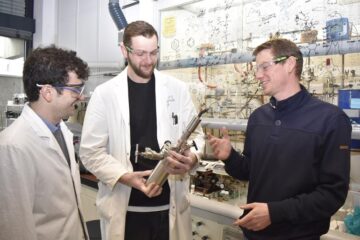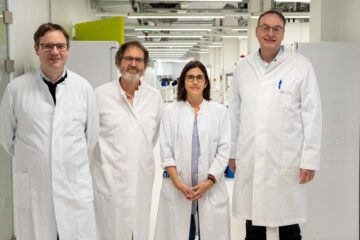Fully electronic temperature and humidity control

M+W Zander offers particle measurement cabinet for development of soot particle filters
M+W Zander has developped with partners a special Particle Measurement Cabinet (PMC) for the automobile industry. It prevents measurements of soot particles from being affected by interferences caused by mechanical vibrations as well as fluctuations in temperature and humidity. The PMC has already been sold to a number of automobile manufacturers and suppliers.
Development and qualification of soot particle filters for diesel fuelled engines require an extensive series of tests. Mechanical vibrations and fluctuations in temperature and atmospheric humidity make evaluation of these measurements difficult. The particle measurement cabinet developed by M+W Zander Products GmbH provides the necessary ambient conditions for carrying out gravimetric measurements. This isolates the measuring system from vibrations, ensures adequate temperature and humidity control and is in conformity with air cleanliness class 5 (3,520 particles per cubic meter of air, for a particle size at 0.5 millions of a meter). It already fulfills the conditions for standardized evaluations, as prescribed globally from 2007 in conformity with the statutory regulations specified by the American Environmental Protection Agency (EPA).
The particle measurement cabinet operates on the recirculation air principle. A vertical, low-turbulence airflow is generated within the interior, which meets the requirements of cleanliness class 5. fresh air is supplied to regulate the atmospheric humidity and maintain the positive pressure in the working area and the air is conditioned appropriately. The measuring station with a granite block is isolated from the enclosure in order to prevent the transmission of vibrations.
A humidifier with a variable humidification output is integrated within the measurement cabinet. The system only requires untempered municipal water of drinking-water quality for air humidification. Automatic blow-down reduces the calcification (lime generation) of humidifier components. This increases the cabinet’s service life, while also cutting down expenditure on maintenance. The two-stage humidifier concept also guarantees continuous humidification during blow down cycles. Two integrated heat exchangers cool or dehumidify the air.
Media Contact
More Information:
http://www.mw-zander.comAll latest news from the category: Automotive Engineering
Automotive Engineering highlights issues related to automobile manufacturing – including vehicle parts and accessories – and the environmental impact and safety of automotive products, production facilities and manufacturing processes.
innovations-report offers stimulating reports and articles on a variety of topics ranging from automobile fuel cells, hybrid technologies, energy saving vehicles and carbon particle filters to engine and brake technologies, driving safety and assistance systems.
Newest articles

Efficient, sustainable and cost-effective hybrid energy storage system for modern power grids
EU project HyFlow: Over three years of research, the consortium of the EU project HyFlow has successfully developed a highly efficient, sustainable, and cost-effective hybrid energy storage system (HESS) that…

Safer alternative for an explosive reaction
The chemical industry has been using a reaction with explosive chemicals for over 100 years – now Mülheim scientists have discovered a safer alternative. The Ritter Group of the Max…

How immune cells communicate to fight viruses
Chemokines are signalling proteins that orchestrate the interaction of immune cells against pathogens and tumours. To understand this complex network, various techniques have been developed to identify chemokine-producing cells. However,…





















